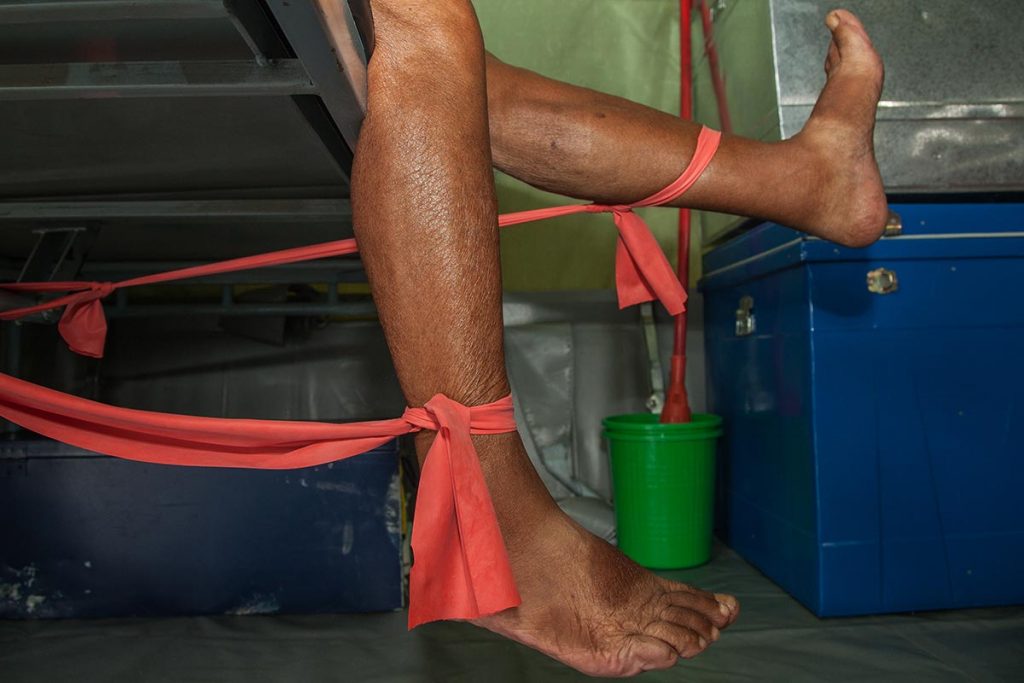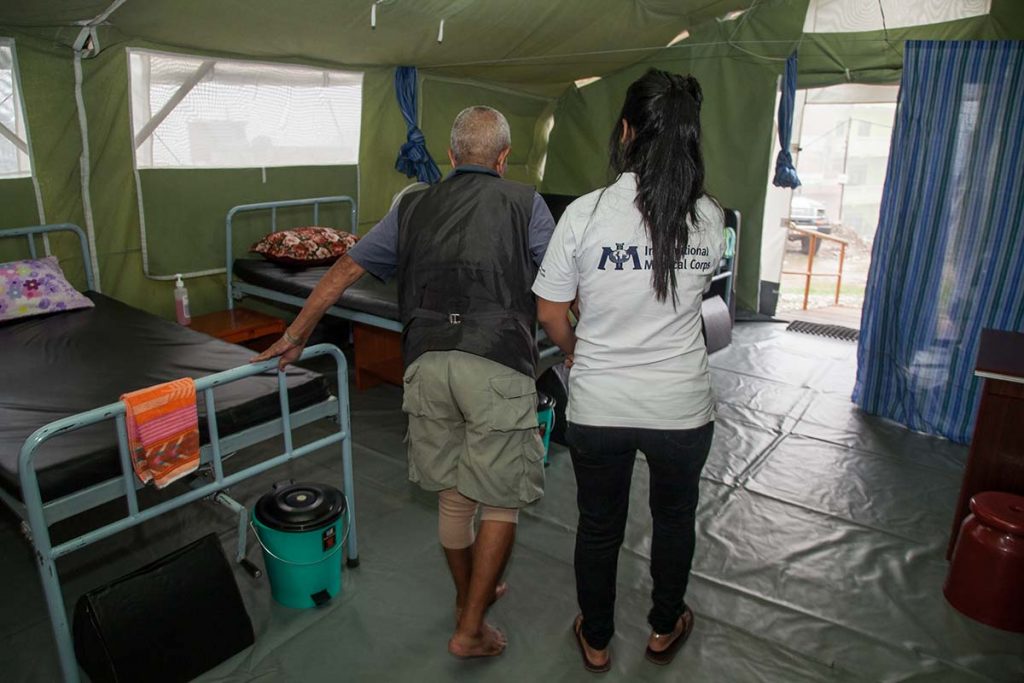In late October 2008, while celebrating Deepawali (an important Nepali festival) with his family, 79-year-old Chandra Bahadur Shrestha felt a sudden loss of sensation in the right half of his body.
Worried, his family rushed him to Kathmandu for treatment. The next day, Chandra Bahadur found himself laying on the hospital bed, unable to move.
Chandra Bahadur was referred to a rehabilitation center in Kathmandu where he underwent numerous physiotherapy and rehabilitation sessions with little avail. “I had difficulties doing daily chores like cleaning, washing and self-grooming”, he recalls. These problems were compounded by his limited mobility which not only hampered his social life but also affected him psychologically, causing loneliness and low self-esteem.
Then one day Chandra Bahadur visited the physiotherapy step-down facility run by International Medical Corps, where a team of trained physiotherapists and nursing staff assessed and evaluated him, and developed a comprehensive rehabilitation plan.
After three months of regular psychosocial and therapeutic intervention, Chandra Bahadur found himself able to walk again. “During the early days, I would feel like giving up the exercise and would think that I was destined to be bedridden”, he admits, “but later on, I was able to do the task that I was assigned to do, because of the new and exciting exercise programme. I was able to adhere to the program every day thanks to the sheer encouragement and supportive environment created by the International Medical Corps physiotherapy team.”

A resident of Gorkha District, Chandra Bahadur is among hundreds of people in Nepal who suffer from various long term crippling conditions. Seven years earlier Chandra Bahadur had been diagnosed with hypertension, but despite that, he refused medicines prescribed by the physician; like many others in Nepal he believed that taking medicine leads to lifelong dependency. So he lived with his pain, unable to walk on his own for years before he was helped by International Medical Corps.
After seeing the results, Chandra Bahadur regrets not seeking help earlier. He recalls that the day he was able to walk was one of the happiest moments of his life.

“That day, early in the morning, he was strolling around the neighborhood and I could see his happy face greeting everyone because it was after a long wait that he was able to walk around independently,” said his son, Sanjeev Shrestha. “Now he can do his everyday activities unsupervised and loves to chat with other elderly men.
